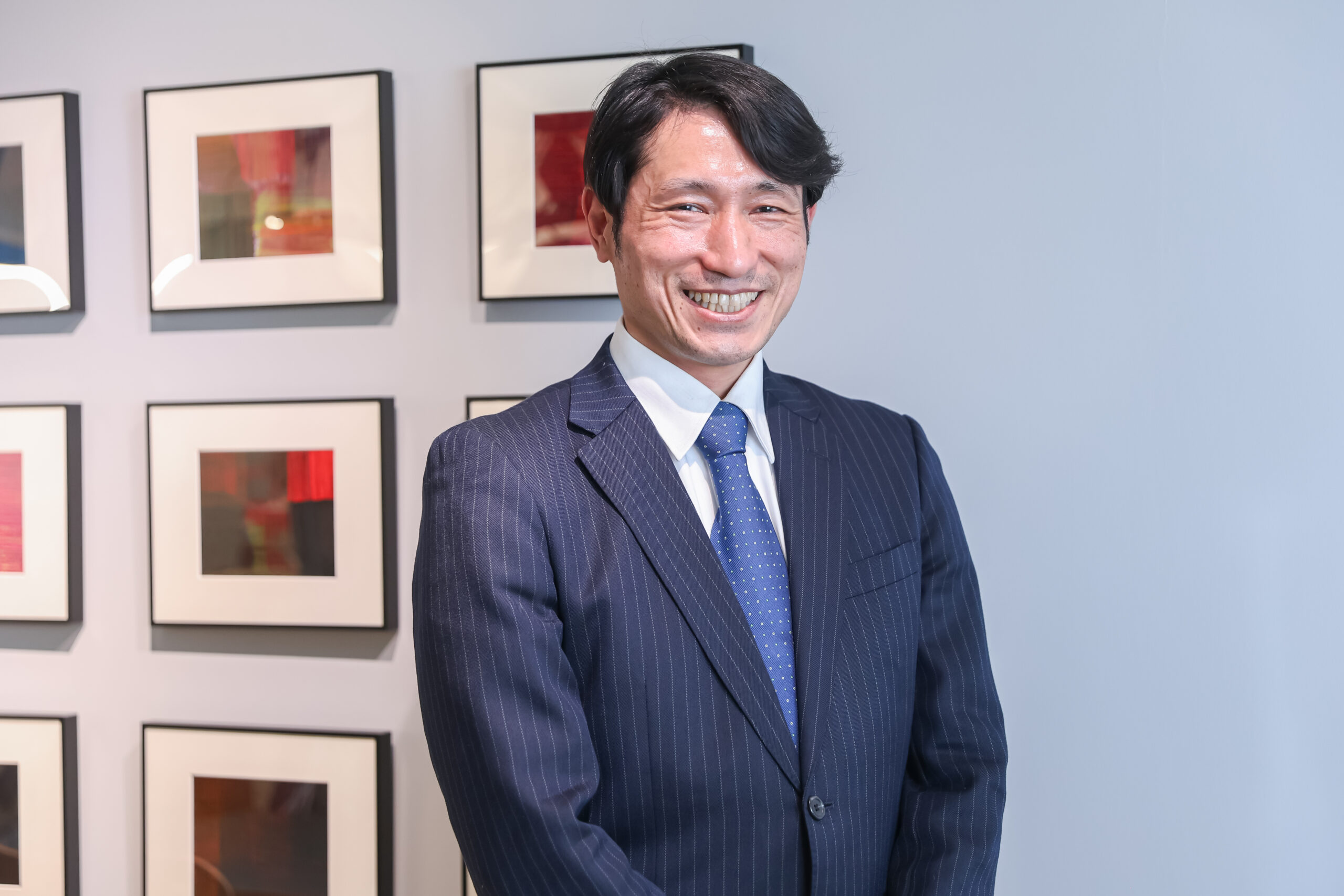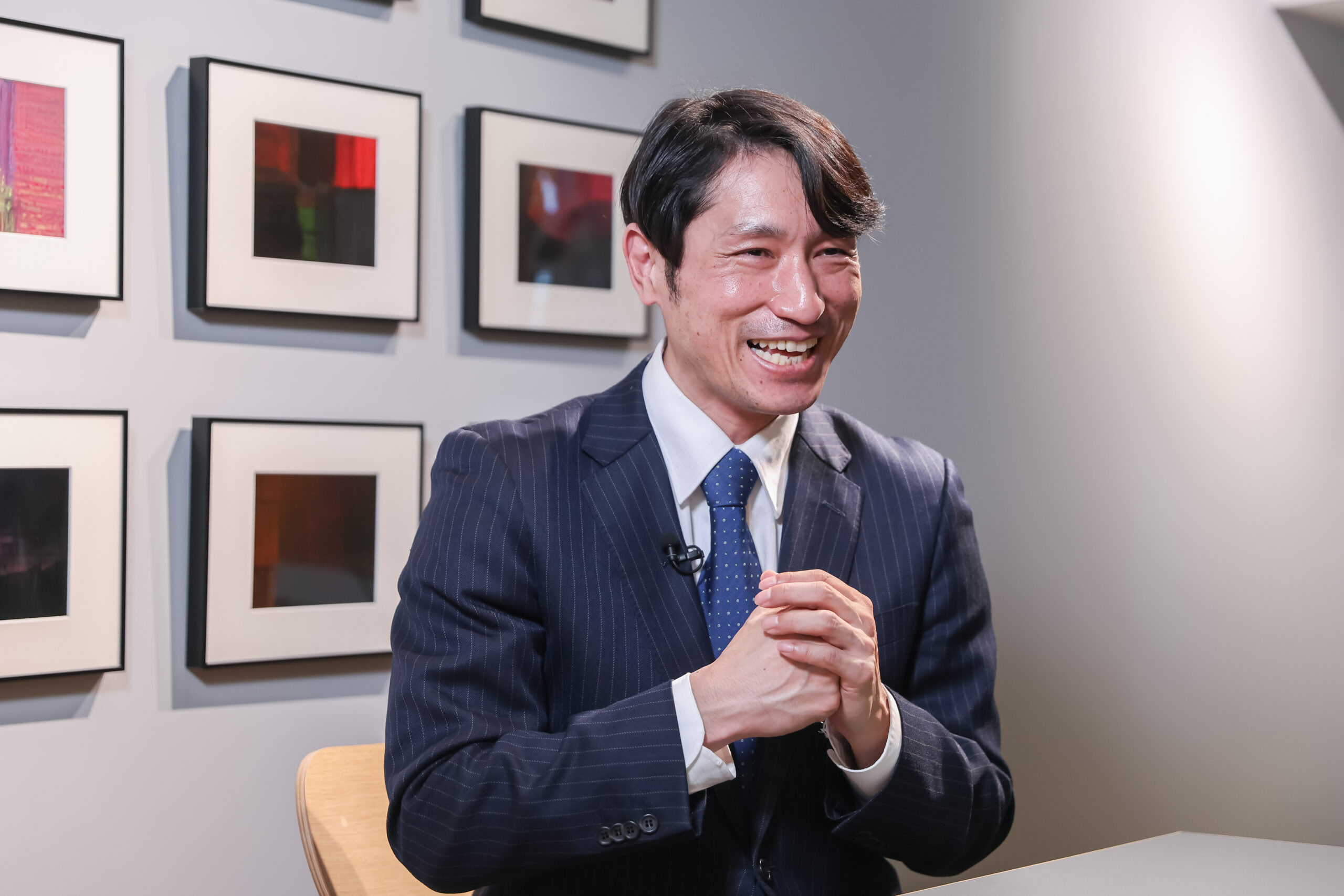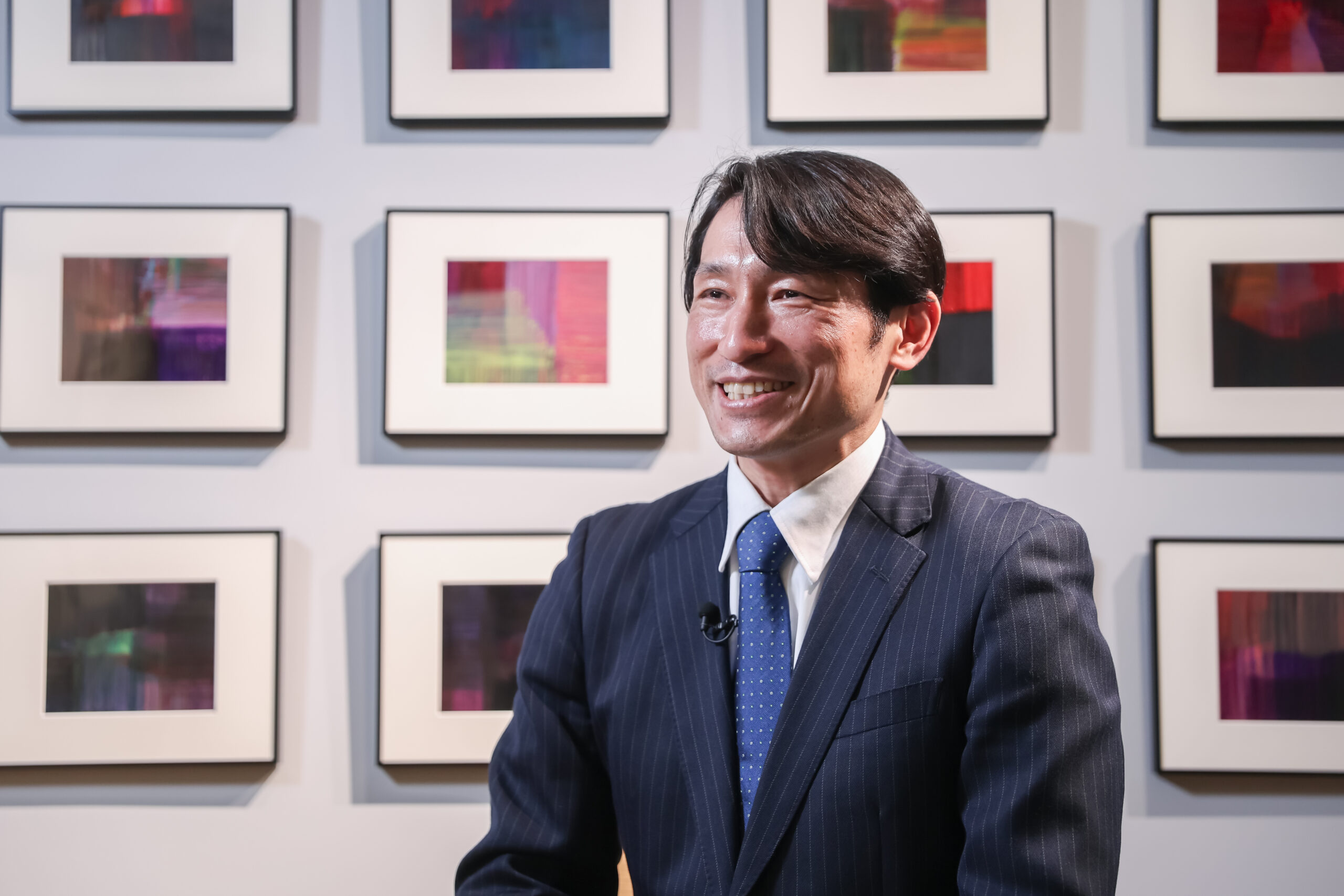Specializing in solid-state physics and nanotechnology, Dr. Tsuyoshi Sekitani (Professor at the Institute of Scientific and Industrial Research, Osaka University) is carrying out research on the creation of new electronic devices through materials research. This interview covers his research in IoB, which involves inserting an EEG device made of soft organic materials into a blood vessel to measure brain waves from the inside of the body.

Measuring the Brain from the Inside of Blood Vessels
The measurement of brain waves poses two main challenges: achieving high precision while minimizing the physical burden. To address these challenges, we are developing a method for measuring brain waves from the inside of blood vessels. As blood vessels run through the entire body, if we can make a small incision on the skin and reach the brain through the blood vessels, we can directly measure from the inside of the brain without opening the skull. Our goal is to measure brain waves accurately by using this ultra minimally invasive (i.e., less physically burdening) technique.
The most important things to consider when inserting a measuring device into a blood vessel are to avoid damaging the very soft blood vessels and to prevent blood clots (blood clumps) from forming. Therefore, we are developing organic materials that are less likely to cause blood clots when exposed to blood, as well as soft brain measuring devices made from such organic materials.
From Space Shuttle Launch to Materials Research
As a child, I was captivated by the spirit of challenge when I watched the launch of the space shuttle on TV, carrying astronaut Mamoru Mohri. I was also very interested in the fact that Dr. Mohri, who had been to space, was conducting research on materials to create a completely new material in the zero-gravity environment of space.

Another reason I became interested in materials research was because I witnessed the accident of a space shuttle burning up upon re-entry. The cause was the detachment of heat-resistant ceramics from the shuttle’s surface. This incident sparked my curiosity about materials as I wondered how the same atoms and electrons could form ceramics that withstand temperatures of 10,000 degrees Celsius, while other materials, like plastics, melt at much lower temperatures.
Thin and Flexible Electronics for Near-Brain Measurement
My research focuses on developing high-performance electronics on ultra-thin and flexible materials like films and rubber, enabling the measurement of extremely faint signals from the body. These devices can be attached to the skin surface or inserted into blood vessels to measure brainwaves. However, due to the delicate nature of these signals, they are often contaminated or obscured by noise. To address this issue, I have incorporated an AI to differentiate between brain activity signals and noise. Currently, I am working on extracting noise-free (high S/N ratio) data from the information obtained using these thin and flexible devices.
The AI is also utilized for the analysis of the extracted data. I believe that by statistically processing the vast amount of data obtained through continuous brain activity measurement (using AI), we can for the first time uncover the universal characteristics of brain signals.
Capturing the Signs: Detecting before Disease Onsets
I am currently collaborating with neurosurgeons, including Dr. Hajime Nakamura and Dr. Takufumi Yanagisawa, to develop these brain measuring devices. The potential applications of these devices are diverse, ranging from detecting early signs of brain hemorrhage and dementia to identifying potential brain-related diseases before they manifest into major events. In this way, we hope to contribute to the development of presymptomatic biomarkers for early disease detection.
Striving for Personalized Brain Health Management
My ultimate goal is to develop materials and intravascular robots that can be inserted into blood vessels without causing any harm or discomfort to the body. These devices should be capable of performing therapeutic interventions, measuring physiological parameters, and being safely removed when no longer needed.
As an individual, I aspire to lead a fulfilling life. In this pursuit, the human brain plays a pivotal role. Our unique personalities, daily emotions, and thoughts are all manifestations of our brain activities. We engage in countless interactions with our brains throughout the day. Therefore, prioritizing brain health management is crucial for self-care.
The brain is highly sensitive and can be altered by even subtle external stimuli. Consequently, the mere act of measuring brain activity can disrupt its natural state. I believe that accurately capturing the brain’s true state represents the pinnacle of scientific technology. While I don’t believe current technology can fully capture the intricacies of an organism optimized over 4 billion years of evolution, I find the pursuit of understanding this mystery to be a worthwhile endeavor. Even if our efforts lead to the conclusion that “we couldn’t measure it all, but it’s truly fascinating,” I consider that a fulfilling outcome for a researcher’s life.

Embrace Your Ideas!
The message I want to convey to the young generation is to never hesitate to pursue your own ideas and thoughts. Your unique perspective and insights that only you can perceive may hold the key to groundbreaking discoveries. Don’t let the assumption that others have already considered these ideas hold you back. By boldly exploring your own thoughts, you open yourself to a world of unexpected and profound discoveries. Embracing this spirit of exploration could lead you down the path of research or, even if you don’t choose a research career, I believe an exciting and fulfilling life awaits you. So, I encourage you to take the leap and embrace your own ideas.
Interview, Writing, and Video Editing by Space-Time Inc.
